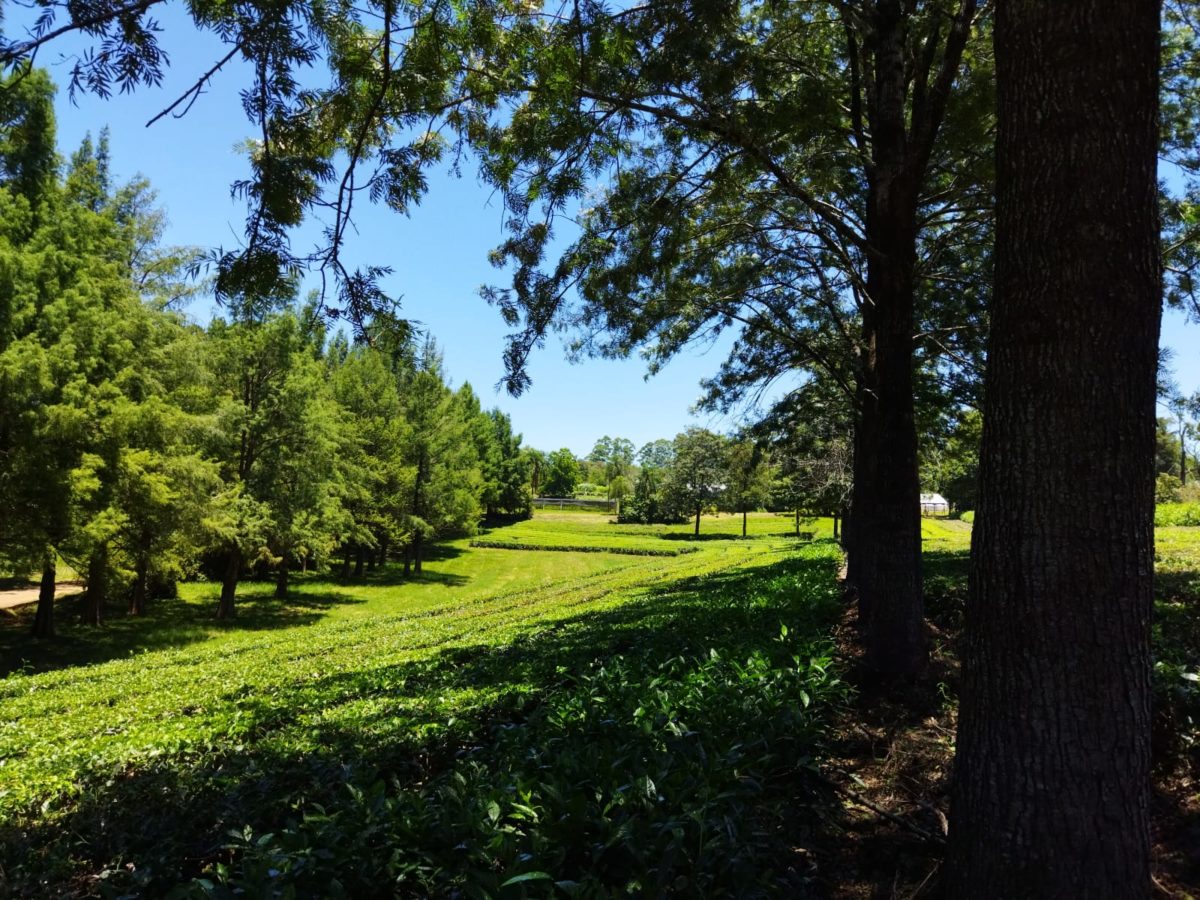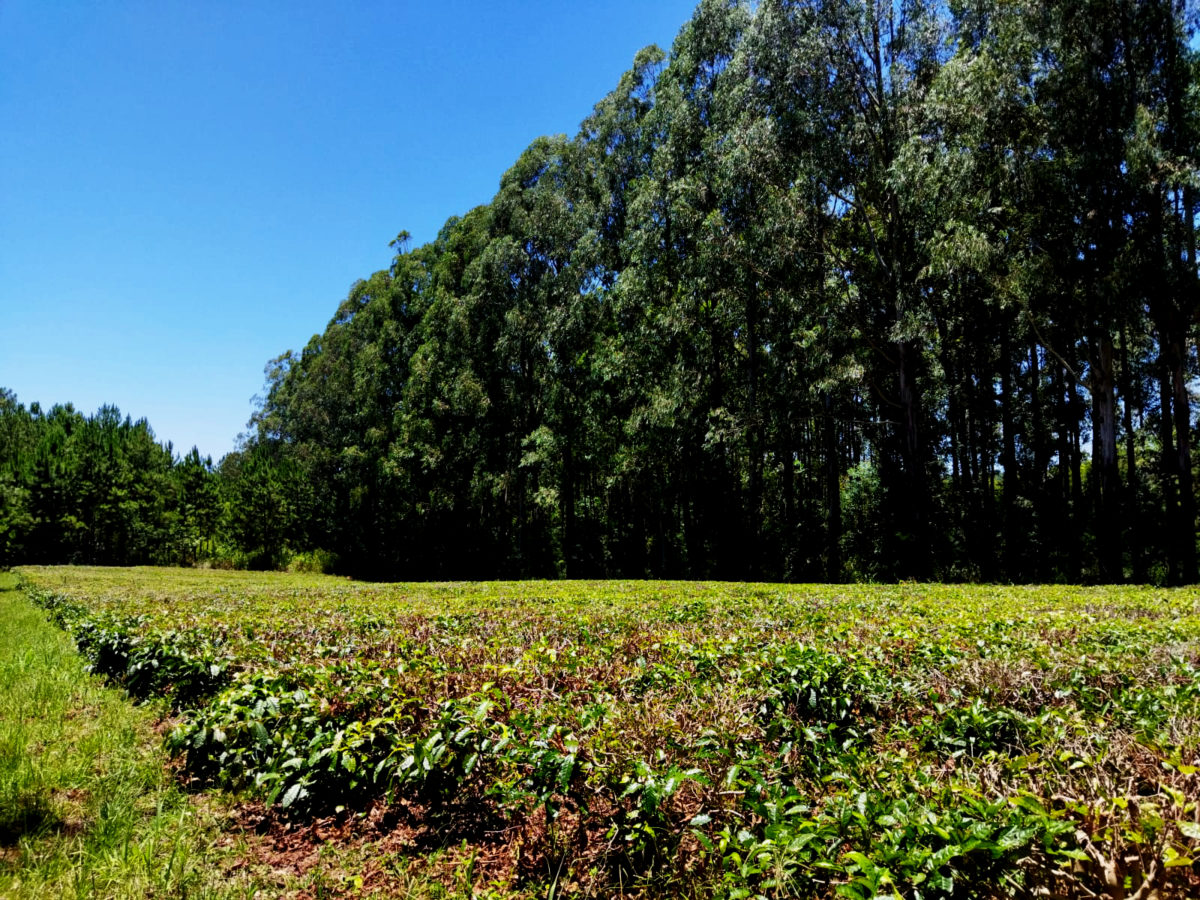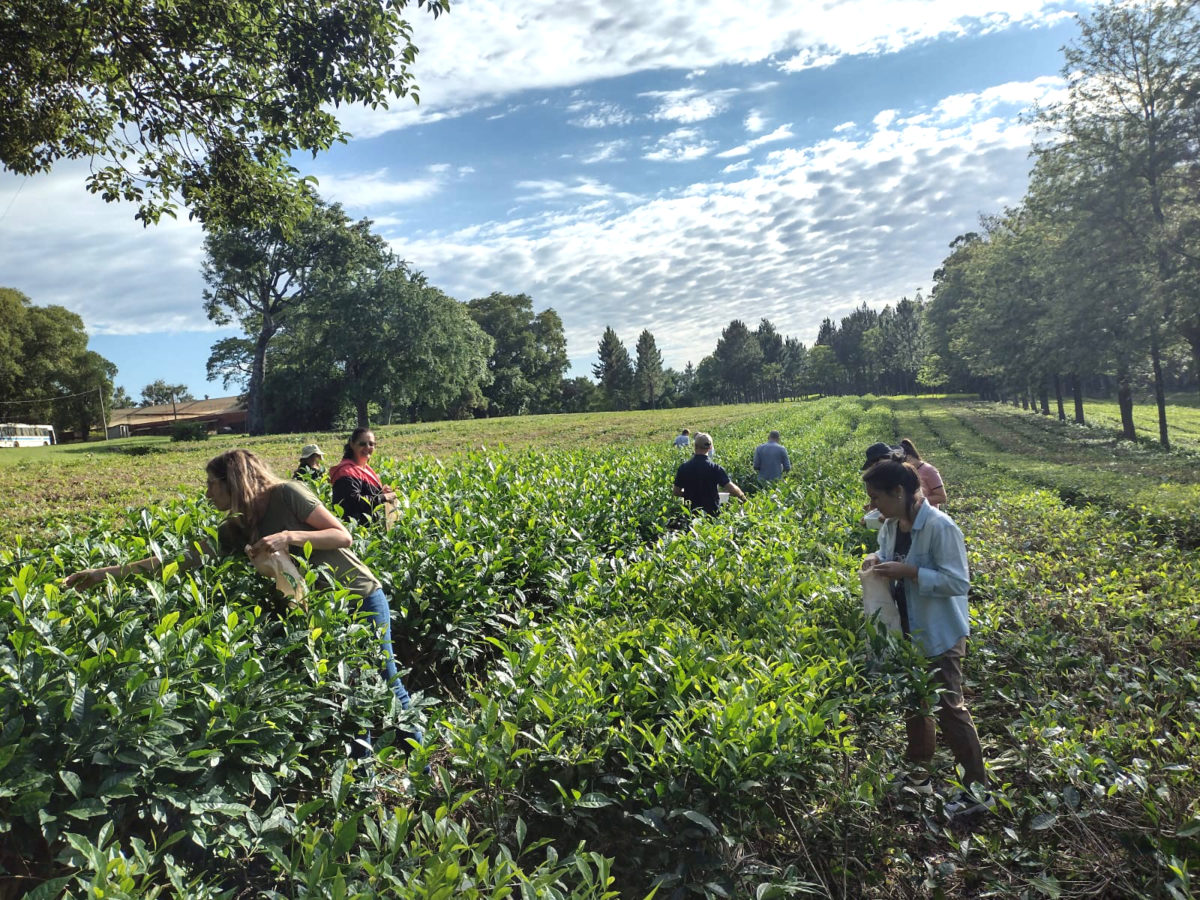
Summary: Argentina’s National Institute of Agricultural Technology (INTA) is a cutting-edge organization in the Agro-technological sector in agricultural research, extension, and innovation. The institute is a decentralized state organization with operational and financial autarchy, associated with the Ministry of Agroindustry. INTA operates in the five ecoregions of Argentina (Northwest, Northeast, Cuyo, Pampeana, and Patagonia) through a structure that includes: a central headquarters, 15 regional centers, 52 experimental stations, six research centers, 22 research institutes, and more than 350 Extension Units.
By Horacio Bustos
Located in Misiones, in the heart of Argentina’s tea growing region, INTA’s Cerro Azul Agricultural Experimental Station (INTA-CA) is the center of research in tea, yerba mate, soils, animal production, annual crops, and agricultural economics, markets, and agrometeorology. In addition, there are experimental fields spanning 550 hectares, where more than 280 hectares under perennial crops (yerba mate, tea, forestry), annual and biennial crops (corn, beans, soybeans, cassava), paddocks, and forest and livestock systems.

INTA-CA is currently working on several projects involving tea.
Agricultural Engineer Sandra Patricia Molina, Ph.D., an expert in vegetative propagation, explained efforts to conserve tea’s germplasm. She studies genetic diversity, in vitro propagation, and tea in the wild, assessing the plant’s yield and quality to establish breeding programs. Molina explains that this improvement program is responsible for 50% of the increase in productivity and serves to develop new and better varieties.
Researchers found that yields per hectare in Argentina vary as much as 250% between producers of low and high technological levels, a difference not explained by agroecological issues. Researchers conducted focus groups to discover the factors that limit the adoption of technology (in sowing, crop management, and harvest) of small and medium producers. Among the constraints of adopting technologies are economic and knowledge constraints. Likewise, the commercial asymmetry between producers and tea processing companies, the absence of the State, and organizational weakness are mentioned.
History
Established in 1956 INTA has conducted technological research and innovation in value chains, growing regions, and territories to improve the country’s competitiveness and sustainable rural development. Its efforts are geared towards innovation as the engine of development. It integrates capabilities to promote inter-institutional cooperation, generate knowledge and technology, and put it at the sector’s service through its extension, information, and communication systems. Two private entities created by the institution in 1993, Intea S.A. and Fundación ArgenINTA, joined forces to form the INTA Group. INTA’s work allows the country to achieve greater potential and opportunities to access regional and international markets with products and services with high added value.
Life Cycle Assessments
INTA-CA also works with tea production’s economic impact and carbon footprint. On this subject, Emiliano Lusiak, an economics graduate, is studying carbon footprints (CO2). This indicator measures the environmental impact caused by human activities on the environment based on the quantity of greenhouse gases (GHG). These are emitted in a product or service elaboration and are measured in CO2 units used to calculate a Life Cycle Assessment (LCA).
LCA is an objective process that allows us to assess the potential environmental impacts of a product or service throughout its life cycle to understand the global environmental consequences of its business. The study includes the complete product, process, or activity cycle, considering the extraction and processing stages of raw materials, production, transport and distribution, use, reuse and maintenance, recycling, and final disposal. It allows the evaluation of different environmental impacts, offering a multi-criteria vision when describing the environmental profile of the object of study, the objective of INTA-CA in this area is to measure the greenhouse gases generated by the production process, determine the stages that generate the greatest impact and try to reduce them, currently the carbon footprint is known, every time one consumes a product there is a carbon footprint emission in the preparation, companies such as Lipton, which markets tea, are working on this issue, reducing the same. In this sense, the INTA-CA researcher tells us that the impact of CO2 on the tea production chain until it reaches homes is low. The most significant impact is taken by the energy or gas used to heat water to make the infusion.

Lusiak explains that approximately 87% of emissions from consuming tea are due to heating water in a place not visible to the consumer, highlighting the importance of using renewable energies.
LCA and CO2 analyses are becoming increasingly popular and essential when certifying production facilities. Agriculture Engineer Guillermo Arndt explains that the standards establish a set of rules or requirements that must be followed. In Argentina there are mandatory standards that tea producers and sellers must comply with, they are in the Argentine Food Code and are prepared and controlled by the state. The industry is adopting voluntary measures as well that take into consideration consumer references. Voluntary Sustainability Standards (VSS) are certified by private entities that carry out audits and evaluations that generally have high costs. The most widely utilized is organic certification but environmental, climate emissions certifications and third-party certification of sustainable practices are important when winning new markets. Certifications also generate confidence in consumers. In Argentina, more than half of the processing plants have some type of certification. These include Rainforest Alliance, Buenas Prá Manufacturing Practices – BMP, Hazard Analysis and Critical Control Points- HACCP, Organic AOL, Organic NOP, ISO 9000, ISO 220000, Kosher, Halal, the Ethical Tea Partnership linked to fair trade, and the Nornas Food Safety System Certification. Once the company has obtained the certification, a seal is placed on the final product.
Related: La Ruta del Té
Biotic Factors
Another area of study is the performance and behavior of biotic factors such as pests and abiotic factors such as climate and global warming.
Noelia May Petroff studies the morphology and physiology of tolerance of plants. One example is water stress in tea cultivars. This program is coordinated with studies of the genetic variation found in the germplasm banks that are currently maintained by INTA-CA. The collection includes plant materials from many different parts of the world and specific crosses. Researchers have developed 203 clones that make up the current in vivo germplasm bank and in vitro conservation protocols complementary to the field bank are being studied, all of this is very important because more than 90% of what is produced in Argentina is for export and the international market is becoming stricter.

Immersing ourselves in the theme of biodiversity, Agriculture Engineer Diana Ohashi, Master in Entomology, tells us about the biodiversity of Misiones where one of the main pests is the Red Tea Mite. These pests leave a telltale a tan leaf, but that does not mean that if we see a tanned leaf, it is necessarily harmed. Beneficial include Vaquita Negra (Parastethorus histrio), the Martincitos, the Predator Mites, and Crispora that help the plant. Biodiversity in Misiones is very rich.
Currently, 50% of the tea produced in Misiones is certified as sustainable. Evaluations include production management practices, the environment and good working conditions for workers, and the qualities of Argentine tea. Argentina’s southernmost production spans an area of 39,800 hectares. Tea is harvested mechanically for the most part and contains a high polyphenols content. While most production is black tea, there is a little green tea being processed.

In recent years there has been an improvement in production towards elaborating tea in strands for domestic consumption. Most of the exported tea is for the preparation of iced tea for the US market. It is important to note that for exports to succeed, a product is needed of quality and must also be competitive. Today the market has consumers who are looking for responsible products in a social, environmental, and economical way. That is where voluntary certifications are given importance. These certifications generate confidence in the consumer and provide a guarantee of quality.
As we can see, INTA-CA works hard on research on camellia sinensis, contributing to tea producers and consumers in Argentina and Latin America with its daily work.
Tea Market
Get More Value from Your Tea: BRU Maker One
+41794574278
Jacque's Organics
(647) 804-7263
So interesting, thank you very much!
could you indicate an estimate of annual production volume?
to assess the importance of the Argentina tea input
within the global tea economy ??
So interesting, thank you very much!
could you indicate an estimate of production volume?
to assess the importance of the Argentina tea input
within the global tea economy ??
Muchas gracias! El estimado de producción anual de té seco en Argentina es de 82.000 toneladas anuales de té, lo que ubica a Argentina en el puesto 11° de la producción mundial.
Saludos cordiales
Horacio